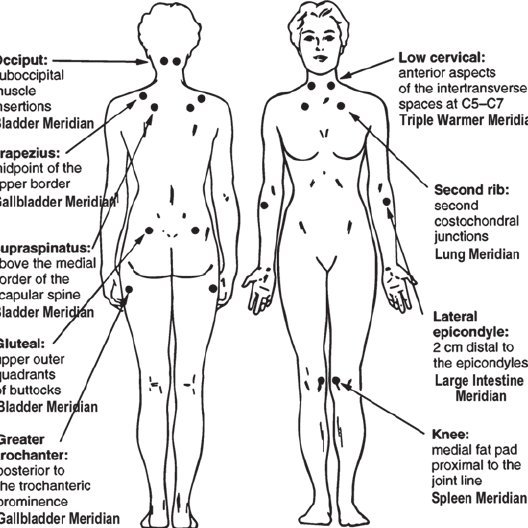Best Treatment for fibromyalgia can be challenging for the medical doctor. The person with it is always seeking the best treatment for fibromyalgia.

What is Fibromyalgia?
Fibromyalgia is simply a common and chronic disorder of muscle pain is frequently referred to as an arthritis-related condition although but doesn’t contain the inflammation and no damage to muscle and other tissues.
Fibromyalgia Syndrome of whole-body pain is, However, symptomatically it is similar to arthritis as it causes severe pain and causes less ability to go perform the daily activities. Fibromyalgia is also seen as a rheumatic condition with joint and soft tissue pain which later may cause chronic muscle pain
Symptoms of Fibromyalgia
For the best treatment for fibromyalgia, we should know the overall symptoms of which include following
- morning stiffness,
- Headaches,
- Irregular sleep patterns,
- IBS (irritable bowel syndrome),
- Painful menstrual periods,
- Hands and feet tingle and can feel numbness,
- Restless leg syndrome,
- Sensitivity to cold or heat,
- Fibro fog (memory problems, cognitive problems).
The NIH (National Institutes of Health, USA) says 90% of fibromyalgia patients are women. Men and children may also be affected. Generally, fibromyalgia is a syndrome with lots of signs and symptoms.
Middle-aged patients are the most commonly reported although it can occur in any time period of life. The most usual symptoms include
- widespread pain,
- Problems with vision,
- Nausea,
- Pelvic, and urinary problems,
- Weight gain, Dizziness,
- Cold/flu-like symptoms,
- Jaw pain and stiffness,
- Skin problems,
- Chest symptoms,
- Depression and Anxiety disorders,
- myofascial pain syndrome (pain/tiredness in muscles and adjacent fibrous tissues),
- Breathing problems.
According to Arthritis and Rheumatism. Vol. 33, No. 2 (February 1990), the following symptoms occur in fibromyalgia.
| Condition | % of FMS Symptoms |
| Muscular Pain | 100 |
| Fatigue | 96 |
| Insomnia | 86 |
| Joint Pains | 72 |
| Headaches | 60 |
| Restless Legs | 56 |
| Numbness and Tingling | 52 |
| Impaired Memory | 46 |
| Leg Cramps | 42 |
| Impaired Concentration | 41 |
| Nervousness | 32 |
| Depression (Major Depression) | 20 |
Some studies indicate that fibromyalgia may also be hereditary. Females who have a close relative with fibromyalgia have a significantly higher risk and the people who suffer from rheumatoid arthritis, lupus (systemic lupus erythematosus), or spinal arthritis (ankylosing spondylitis) are found a higher risk of developing fibromyalgia syndrome.
Etiology of Fibromyalgia
It’s still unknown how the syndrome of fibromyalgia occurs. The factors such as traumatic, stressful, or emotional events are found linked with the progression of developing fibromyalgia. The possible causal factors are listed as follows
- A stressful, traumatic physical or emotional event like Post-traumatic stress disorder, Repetitive injuries
- Rheumatoid arthritis
- Lupus
- CNS (central nervous system) problems
- The way our genes regulate how we process painful stimuli.
Diagnosis of Fibromyalgia
Regarding the diagnosis of this syndrome, the patient who suffers from this usually visits the doctor for many times before the diagnosis of fibromyalgia with the common complaints of muscle pain.
As laboratory tests do not show a physical reason for the pain that goes with fibromyalgia. There is no any definite blood test for fibromyalgia diagnosis
This can be frustrating for the patient and the doctor as well. Unfortunately, the patient still runs the risk of being told by an untrained doctor that his pain is not real and that there is therefore no treatment.
Classification of Fibromyalgia
The American college of rheumatology had set criteria for the classification of fibromyalgia which is as follows: as
The American College of Rheumatology 1990 Criteria for the Classification of Fibromyalgia
Wide Spread Pain
- History of widespread pain has been present for at least three months
Definition: Pain is considered widespread when all of the following are present:
- Pain in both sides of the body
- Pain above and below the waist
- In addition, axial skeletal pain (cervical spine, anterior chest, thoracic spine or low back pain) must be present. Low back pain is considered lower segment pain.
Also Read: Amazing benefits of Vitamin C foods and drinks
Fibromyalgia Tender Points
In Fibromyalgia there will be multiple tender points. Fibromyalgia tender point hands, legs, or other parts of the body should know. Also, there might be fibromyalgia tender points male and female can be similar or different
The pain usually occurs at 18 tender points in our body. Out of which at least if 11 tender points are present which will be easy for fibromyalgia diagnosis and best fibromyalgia treatment.
These are the ACR Tender points According to criteria there is Pain in 11 of 18 tender point sites on digital palpation. Digital palpation should be performed with an approximate force of 4 kg. A tender point has to be painful at palpation, not just “tender.”
Illustration of ACR fibromyalgia tender points
The most common fibromyalgia tender points chart according to ACR to be palpated are as follow
- Occiput (2) – at the suboccipital muscle insertions.
- Low cervical (2) – at the anterior aspects of the intertransverse spaces at C5-C7.
- Trapezius (2) – at the midpoint of the upper border.
- Supraspinatus (2) – at origins, above the scapula spine near the medial border.
- Second rib (2) – upper lateral to the second costochondral junction.
- Lateral epicondyle (2) – 2 cm distal to the epicondyles.
- Gluteal (2) – in upper outer quadrants of buttocks in anterior fold of muscle.
- Greater trochanter (2) – posterior to the trochanteric prominence.
- Knee (2) – at the medial fat pad proximal to the joint line.

Also Read: Safe Scoliosis Management and Treatment Approach
Best Treatments for Fibromyalgia
The treatment of fibromyalgia is not so simple. And there is not so much specific and new treatment for fibromyalgia. Each patient is different and will require individualized treatment. For the best treatment for fibromyalgia, following modality of Treatment is needed.
- Active exercise program
- Drug Treatment for fibromyalgia
- Low-dose anti-depressants Drugs
- Acupuncture therapy treatment
- Psychotherapy therapy
- Behavior modification therapy
- Chiropractic therapy
- Massage therapy
- Physiotherapy treatment
Drugs Treatment for Fibromyalgia
Pain Medications
- Various pain medications as NSAIDs, muscle relaxants have a good response if continuous for longer period of time.
- If the pain is severe, and other therapies have not been effective or cannot be utilized, chronic opioid analgesic therapy – oral painkillers – may be an option.
- Aspirin and ibuprofen are generally not very effective. One study demonstrated that taking a tricyclic antidepressant, with a selective serotonin reuptake inhibitor fluoxetine), all in combination was twice as effective as either one taken alone.
Exercise Treatment for Fibromyalgia
- Aerobic exercise combined with resistance training (strength-training) has been linked to a significant improvement in pain, tender point counts, and sleep disturbance.
- Deep-breathing exercises and meditation will help reduce the stress that can bring on symptoms.
Acupuncture and massage treatment for fibromyalgia
Many patients have experienced improvements in their quality of life after starting acupuncture therapy. How often sessions should depend on the individual.
- Acupuncture is currently used by 1 in 5 fibromyalgia patients within 2 years of diagnosis.
- The special massage therapy for the treatment of fibromyaliga also improved fibromyalgia syndrome.
Behavior modification therapy
This includes learning new coping skills, relaxation exercises, and self-hypnosis. Patients have commented that pain perception, which is a very complicated phenomenon, may be altered with experience.
- Set a regular sleep pattern. Go to bed and wake up at the same time each day. Getting enough sleep lets your body repair itself, physically and mentally.
- Also, avoid daytime napping and limit caffeine intake, which can disrupt sleep. Nicotine is a stimulant, so those fibromyalgia patients with sleep problems should stop smoking.C
So, in conclusion, the best treatment for fibromyalgia should be thought differently in order to cope with.

